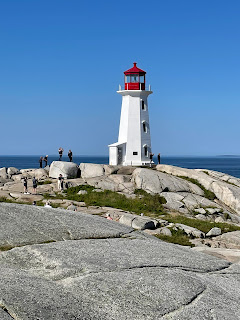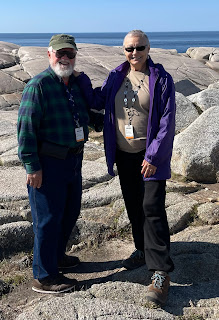Halifax, Nova Scotia
Last stop before our return to Boston. On one hand, it’s sad that our long cruise is quickly coming to an end. On the other hand, it was a bit of an anticlimactic stop for me. Another bus ride… grateful it wasn’t also a tender trip to shore! Paul says this was his favorite of all the shore excursions. Maybe because it reminds him of northern Michigan. I, on the other hand, am not a big fan of the landscape of northern Michigan.
In 1749 Edward Cornwallis was sent to Halifax to build a garrison and settlement. He had 2600 settlers. Today the capitol city was a population of 400,000. All of Nova Scotia has 1 million.
Halifax has seen and assisted in its share of disasters. In 1912 the Titanic sank about 700 nautical miles from Halifax. About 700 got into lifeboats and were taken to New York. The dead were taken to Halifax. 209 bodies were brought here and interred in three cemeteries— the Roman Catholic, the nondenominational, and the Jewish, if they were able to determine what their affiliation was.
We took an hour’s bus ride out to Peggy’s Cove and the lighthouse there. We spent an hour there, and drove an hour back. We had a very professional tour guide (who consistently addressed us as ‘ladies and gentlemen’). She talked about how many of the Titanic dead are buried here.
The lighthouse at Peggy’s Cove


















Comments
Post a Comment